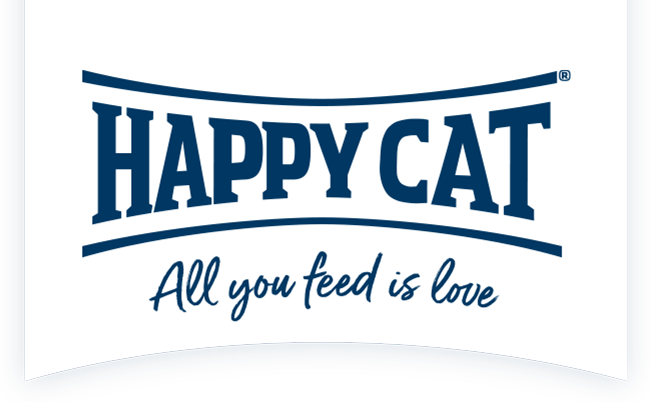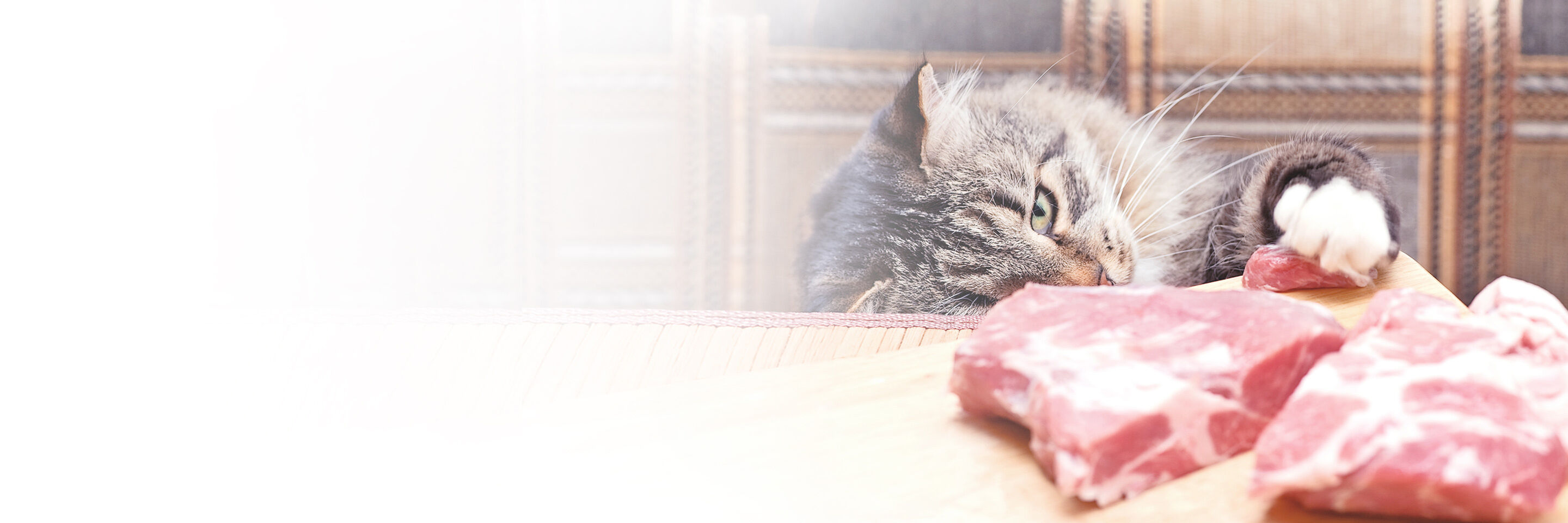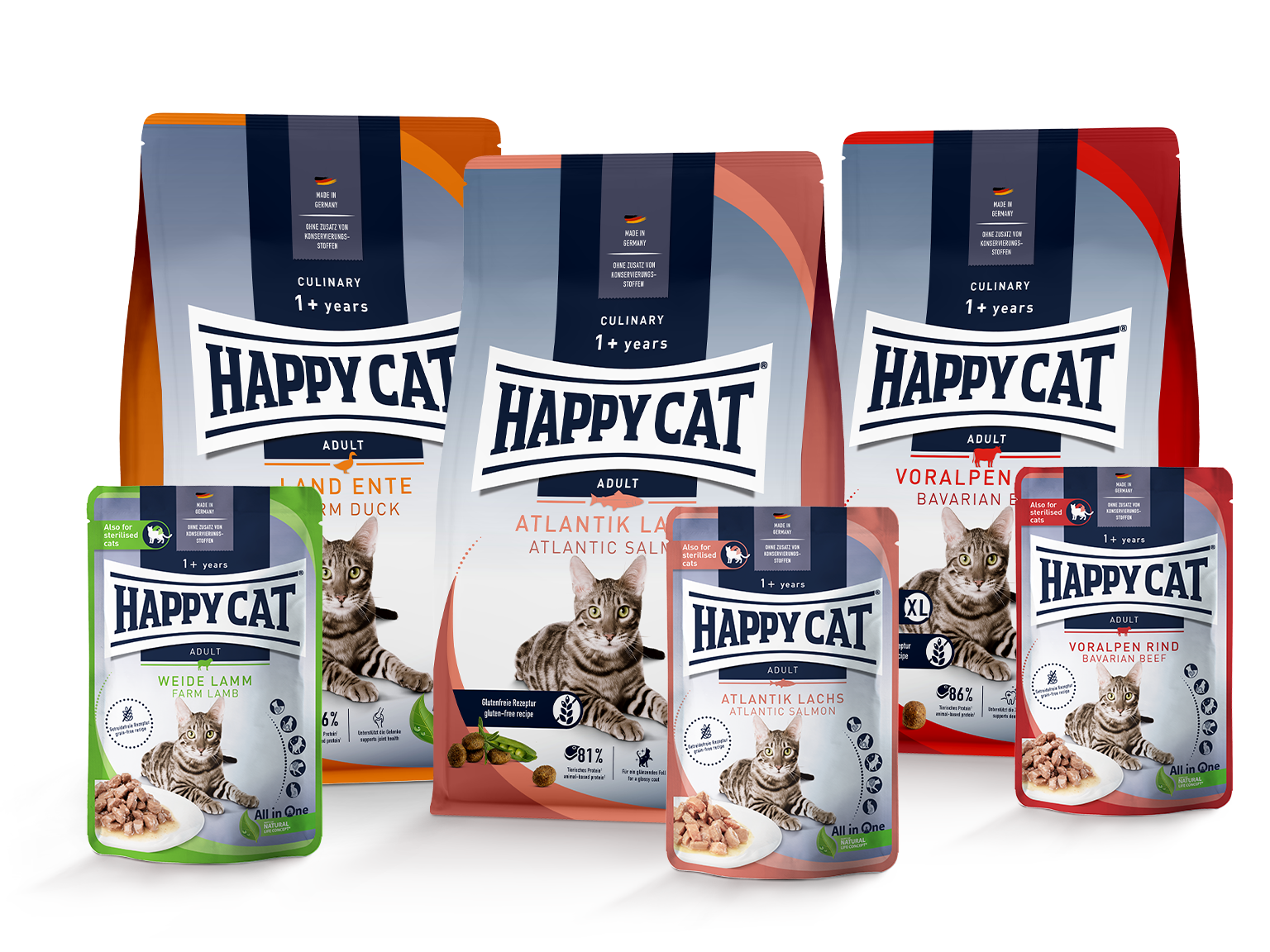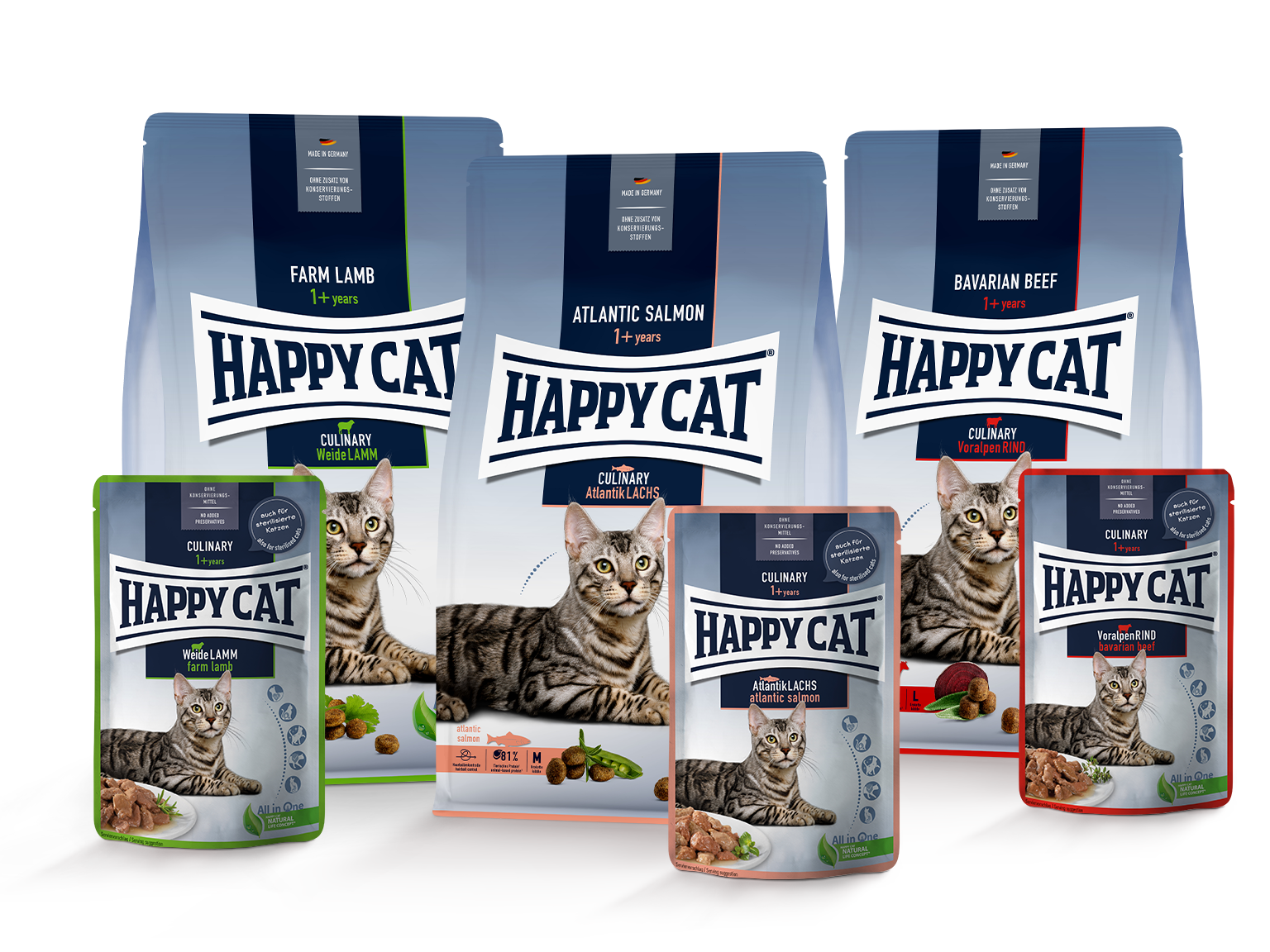Cats have very particular metabolisms, and any complete food they are given needs to contain lots of meat, regardless of whether it is dry or wet food. If you are looking for a cat food with a high meat ratio, then you have come to exactly the right place at Happy Cat. The proportion of animal protein in our food is up to 88%, depending on the recipe. Read on to discover more about the optimum meat ratio and the individual food components.
What does ‘cat food with a high meat ratio’ mean?
The meat ratio in the food is defined as the proportion of animal protein in the total protein. There is no single definition of the term meat. Even the way of calculating the meat ratio in the cat food is not clearly defined.
But one thing is true, however. Meat does not only mean the pure muscle meat. It includes everything from the farm or prey animal that can be used: cartilage, bones, internal organs, stomach contents, skin and fur. In addition to protein and fat, this complete package supplies vital minerals such as calcium along with trace elements, vitamins, dietary fibre and carbohydrates. Muscle meat also supplies B vitamins, phosphorus and iron.
A comparison: A typical prey animal provides the predator with less muscle meat than you would imagine. The muscle meat ratio of a mouse is just 20% on average, and it is around 30% for a rabbit. By fully utilising the prey animal – which our cats in the wild do perfectly from the environmental and ethical viewpoints – the predator is guaranteed a reliable supply of all the necessary nutrients. And with the Happy Cat varieties, your cat is also eating the very best.
Varied raw ingredient sources: animal and plant proteins
To be able to compare cat foods directly and without bias, the meat ratio as the animal protein in the total protein must be defined by the manufacturer. ‘Weende’ or proximate analysis is used to determine the total protein contained in an animal feed, otherwise expressed as the total protein or crude protein content. There are two raw ingredient sources: animal and plant proteins. Depending on the type, grains and other carbohydrate sources also have a natural protein content of between 8% and 14%, in addition to dietary fibre and carbohydrates. You may have already seen the terms ‘plant protein extract’ or ‘protein isolate’ on animal feed packaging. This is plant protein in a highly-concentrated form.
A cat food with a meat ratio of 80% thus means that the largest part of the feed (80%) originates from the slaughtered animal, so it contains just 20% plant protein.
The manufacturer’s declared meat ratio in cat food under the magnifier
To give you a better idea of the manufacturer’s declaration, here is an example of a cat food with a declared 70% meat ratio
lamb 51% (of which lamb meat 28%*, dried lamb meat 16%**, lamb fat 8%***), whole green peas, fresh pike (8%)*, dried herring (7%)**, fresh duck offal (4%)*, potatoes, herbs… * fresh, ** dehydrated, ***fat ≠ meat
If you add up the figures, you will certainly see that the declared 70 is correct. But only 40% of the ingredients are fresh. Because of the natural water content of the fresh meat, this will weigh much more than dried ingredients. If we were to dry these ingredients as well, their proportion would shrink to just 13%.
It is also important to know that pure fat does not count in the meat ratio. It is obtained in a similar way to home-made lard, by heating belly meat and other fatty tissue from the slaughtered animal and then separately collecting the fat that flows out – it has already been processed and cannot be included in the meat ratio.
In this example, just over half of the declared 70% meat ratio remains in the recipe after critical examination:
23% (dried ingredients) + 13% (fresh ingredients converted to the water content of dried ingredients) = 36%
Other details about the cat food meat ratio
There is a difference between the group declaration and individual declaration used to list the ingredients in the feed. In the group declaration, ingredients are combined to create raw ingredient groups:
- ‘Meat and animal derivatives’ (all ingredients that originate from the animal)
- ‘Grain and derivatives of vegetable origin’ (all plant-based ingredients)
Amounts of a particular ingredient are therefore often specified as a percentage in brackets. This percentage then relates to the precise proportion of this ingredient within the specific raw material group.
Consider this example: The declaration ‘Meat and animal derivatives (20% poultry)’ means that the percentage of poultry within this group is 20%. It is not clear, however, from which animals the remaining 80% originates.
The individual declaration, in contrast, sets out all the feed components individually, and you can see precisely what the feed contains for your cat. Is your cat food-sensitive? Then you need a food with individual declarations since this is the only way to be sure that the ingredients in the recipe will not change without you knowing. You know precisely what the food contains for your cat, and the manufacturer must keep to the declared specification.
How does Happy Cat declare the food components and meat ratio?
At Happy Cat we always use the individual declaration for our dry food. Let us examine the composition in detail with reference to Happy Cat Culinary Farm Duck:
duck protein* (20%), potato flakes, dehydrated potato, poultry protein**, animal fat (including poultry), meat meal, sunflower oil (2.4%), lignocellulose, fish hydrolysate*, beet pulp* (desugared), canola oil (0.6%), yeasts*, apple pomace* (0.4%), carrots (0.25%), seaweed, linseed (0.2%), chicory powder (0.15% = 0.1% inulin), flaked peas (0.13 %), beetroot powder (0.13%), mussel meat* (0.05%), yeasts* (extract, 0.02% = 0.0032% MOS);
*) dried **) dried, partially hydrolysed
*The meat ratio of this food is 20% – at first glance, this might appear to be rather low, but if the duck was used as a fresh ingredient, the 25% would become 75% protein. In fact, fresh ingredients weigh up to two thirds more than dried ingredients because of the water held in the tissues.
What has to be specified on the cat food packaging?
Granted comparing one food with another can be a confusing business. But to allow you to check the advertising claims, a statutory regulation requires that the precise amounts of all special ingredients that the manufacturer uses to advertise on the packaging also be listed in the composition. Other details are voluntary. So you can examine the details very critically when selecting the right food. At first glance, listing fresh meat components raises the meat ratio, so it needs to be converted as we illustrate in the following graphic.
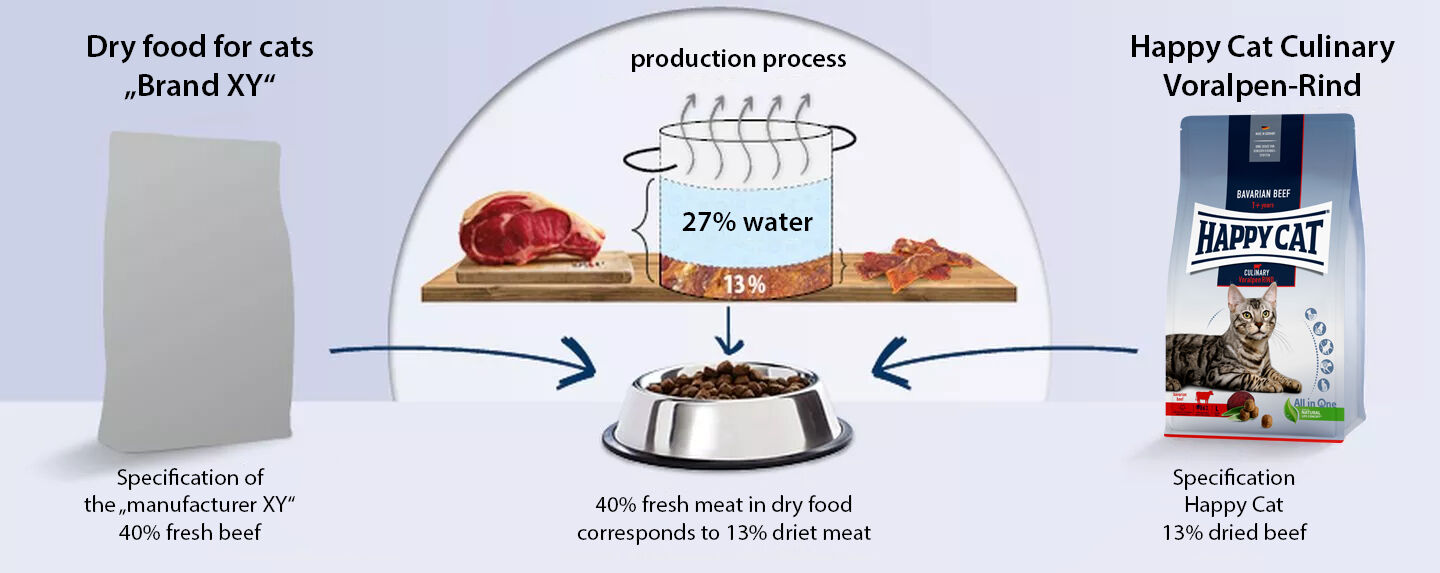
We like to list our pet food composition as accurately as possible. This means we go much further than simply stating the legally required information – we also list the other components. We do this to increase transparency for you, so you know what is contained and in what amount in our dry food for your feline friend.
